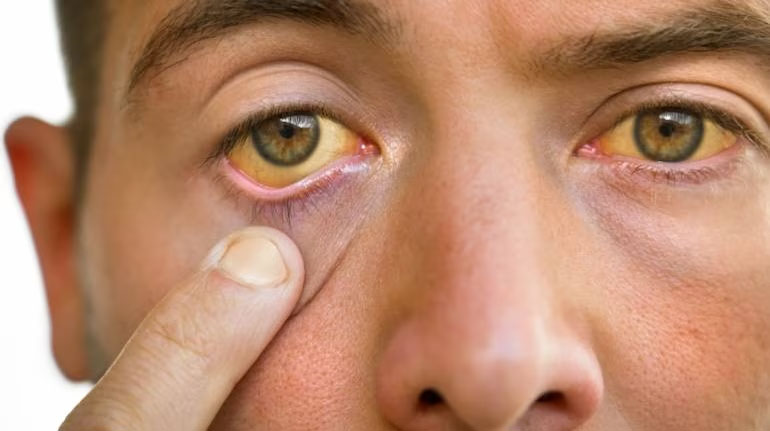Jaundice
Overview: Jaundice is a medical condition characterized by the yellowing of the skin, eyes, and mucous membranes due to elevated levels of bilirubin in the bloodstream. Bilirubin is a yellow pigment produced during the breakdown of red blood cells. Jaundice itself is not a disease but a symptom of an underlying condition affecting the liver, gallbladder, or blood.
Causes:
- Hepatitis:
- Viral infections, such as hepatitis A, B, or C, can inflame the liver and lead to jaundice.
- Liver Cirrhosis:
- Scarring of the liver tissue, often due to chronic alcoholism or other liver diseases.
- Hemolytic Anemia:
- Increased breakdown of red blood cells, releasing excess bilirubin.
- Gilbert's Syndrome:
- A genetic condition causing mild elevation of bilirubin levels.
- Gallstones:
- Obstruction of the bile ducts by gallstones can lead to jaundice.
- Alcoholic Liver Disease:
- Excessive alcohol consumption can damage the liver, causing jaundice.
- Autoimmune Hepatitis:
- The immune system mistakenly attacks the liver, leading to inflammation.
Symptoms:
- Yellowing of the Skin and Eyes:
- The most prominent sign, caused by the accumulation of bilirubin.
- Pale Stools:
- Stools may appear pale or gray due to decreased bilirubin excretion.
- Dark Urine:
- Urine may be darker than usual, indicating increased bilirubin excretion.
- Fatigue:
- Generalized weakness and fatigue.
- Abdominal Pain:
- Discomfort or pain in the abdominal region, especially around the liver.
- Itching (Pruritus):
- Skin itching is common and can be intense.
- Nausea and Vomiting:
- Loss of appetite, nausea, and vomiting may occur.
Diagnosis:
- Blood Tests:
- Assessing bilirubin levels, liver enzyme levels, and other markers of liver function.
- Imaging Studies:
- Ultrasound, CT scans, or MRIs to visualize the liver and bile ducts.
- Liver Biopsy:
Taking a small tissue sample to evaluate liver function and identify the cause of jaundice.

